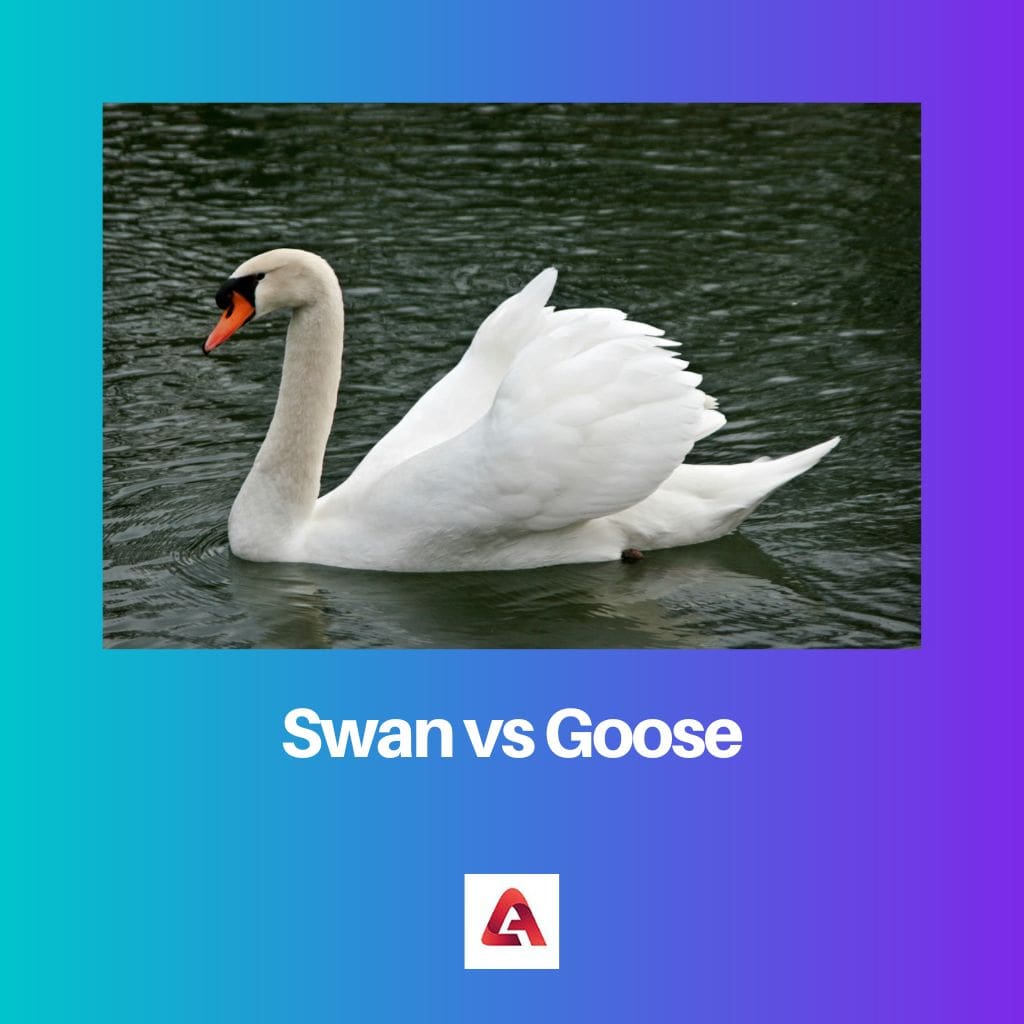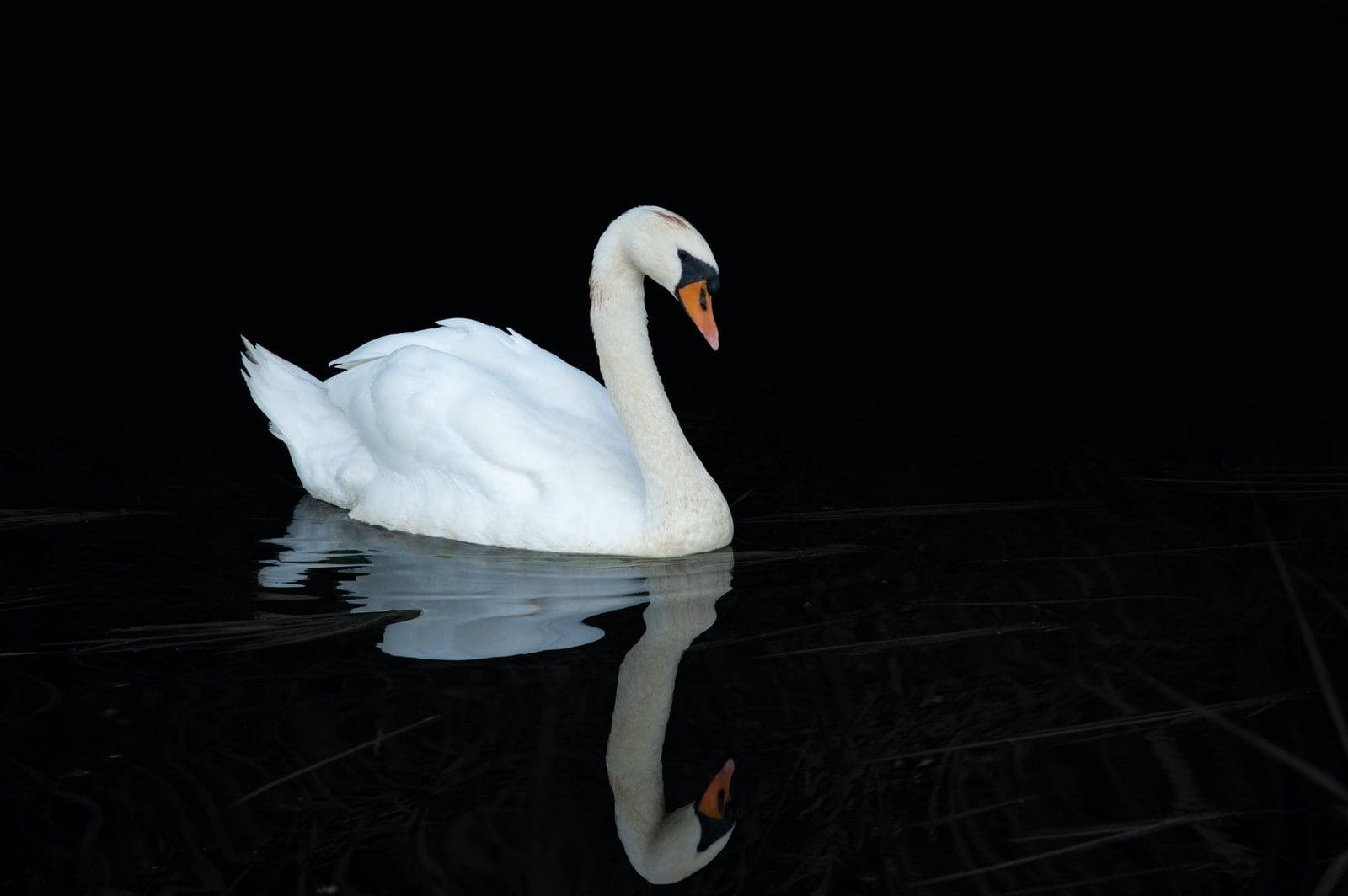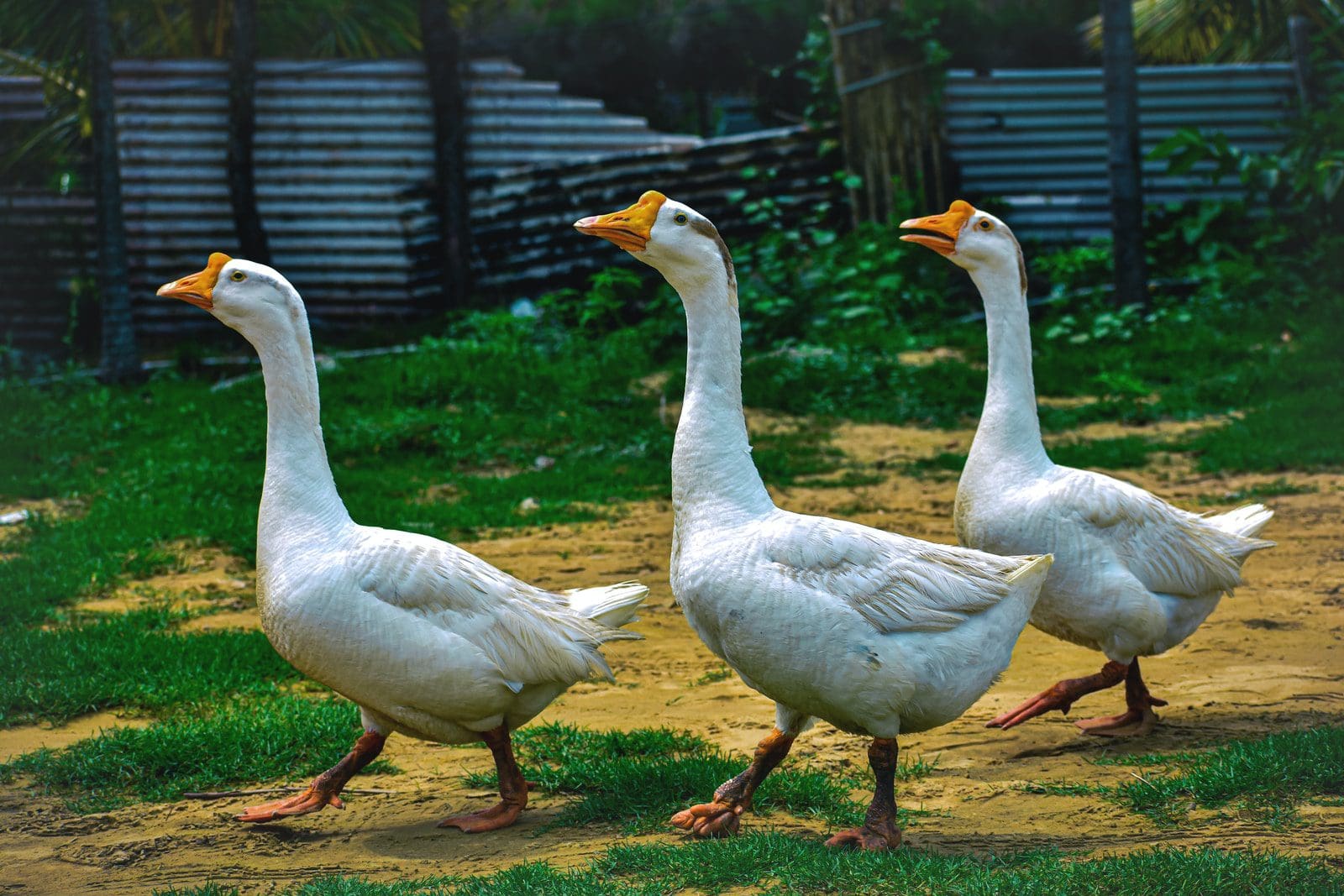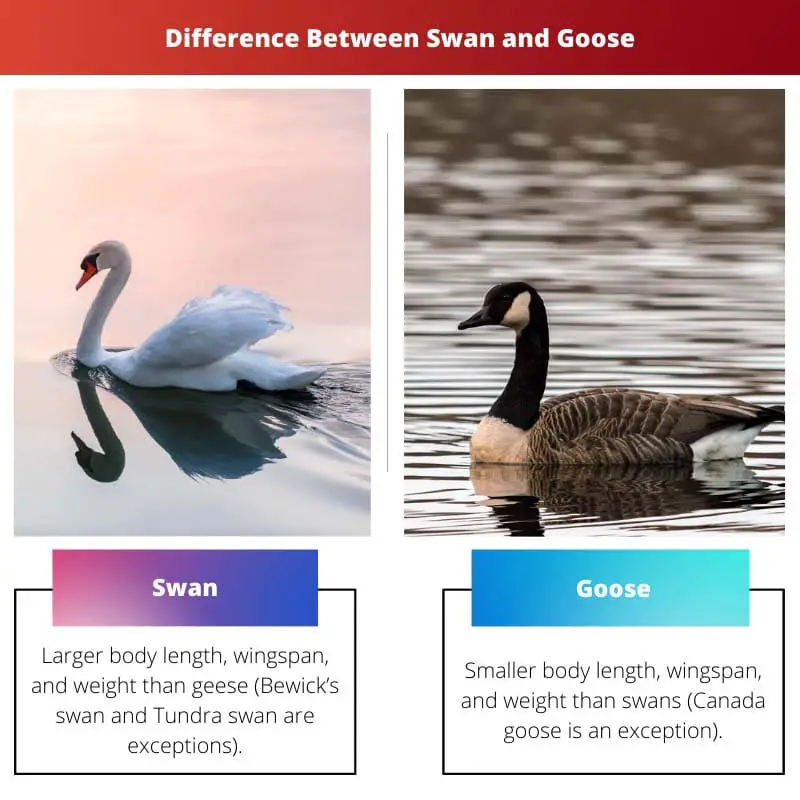A swan and a goose may seem strikingly similar at first sight. Both the water birds are members of the family Anatidae, and the subfamily, Anserinae.
Both have webbed feet that help them thrust forward while swimming. Interestingly, the swan and the goose evolved from ducks approximately 30 million years ago.
Approximately 12 million years ago, swans and geese split off from each other and evolved separately. They further developed subspecies, which their unique physical characteristics can identify.
Key Takeaways
- Swans have longer necks and more elegant bodies, larger than geese.
- Geese are smaller, have shorter necks, and are more aggressive than swans.
- Swans and geese belong to the Anatidae family but differ in appearance, behavior, and species classifications.
Swan vs. Goose
Swans are larger and longer-necked than geese, with striking white feathers and graceful necks. Some species have distinctive orange bills and black face markings. Geese are smaller and shorter-necked than swans, with a variety of feather colors and distinctive honking calls.

Swans also tend to have longer, thinner necks with a visible S-shaped curve. On the contrary, geese have short and thick necks that are straight.
Although smaller than a swan, a goose has longer legs than the latter.
Comparison Table
| Parameters of comparison | Swan | Goose |
|---|---|---|
| Classification | 7 species (out of which one is extinct) under the single genus, Cygnus. | 22 species under 3 different genera. |
| Size | Larger body length, wingspan, and weight than geese (Bewick’s swan and Tundra swan are exceptions) | Smaller body length, wingspan, and weight than swans (Canada goose is an exception) |
| Appearance | Long and thin necks with a visible S-shaped curve. | Short, thick, and straight necks but longer legs than swans. |
| Color | White or white with some black spots or completely black on rare instances. | Blackish, grey, or brown with white marks on the belly and tail. |
| Habitat | Found mostly in a cold or temperate climate, except in Antarctica. | Only found in Northern Hemisphere, North America, Asia, and Europe. |
| Diet | Aquatic vegetation, mollusks, small fish, frogs, worms, and small grass from land (swans browse for food, more in water than on land) | Grass, stems, roots, leaves, shoots, stems, bulbs, grain, and berries, as well as small insects (geese browse for food, more on land than in water) |
| Population | Between 1.5-1.6 million birds under 7 species | More than 5 million Canadian geese, more than 15 million Snow geese, and approximately 2 million Ross’s geese. 850,000 bean geese, and so on. |
| Predators | Less number of predators due to the large size | More number of predators due to the small size |
| Lifespan | Approximately 20-30 years | 10-12 years in the wild and more than 30 years in captivity |
What is Swan?
A swan is a large waterbird with a long thin neck, webbed feet, broad bill, and short legs. It may be fully white in color, white in color with a few black spots, or in rare cases, completely black.
Swans have jagged bill that acts as teeth for catching and eating fish. Swans belong to the Anatidae family under the genus Cygnus.
These birds evolved out of ducks to form 7 species, of which one faced extinction. A species, namely the Coscoroba swan, also exists but is not considered a ‘true swan.’
Swans are found in a cold or temperate climate. Several species of these waterfowl are either partly or wholly migratory.
A swan is known to mate for life. These birds are very protective of their nests and show aggressive intraspecific behavior when facing any threat.
Swans have very few predators by dint of their large size. Foxes, coyotes, raccoons, and wolves hunt eggs and sometimes on adults.

What is Goose?
The term ‘goose’ is used for females, while ‘gander’ is for males. Geese are large-bodied waterfowl but have comparatively shorter necks, smaller sizes, and lesser weight than a swan.
They are known to be either blackish, grey, or brown, having small white patches on their belly and tail. They have webbed feet and a short, broad bill.
Like swans, geese are members of the Anatidae and the Anserinae subfamily. They evolved out of ducks to form 22 subspecies under 3 different genera.
Geese are monogamous and mate for life. Unlike swans, geese tend to be very social. Due to their smaller size, they are more prone to be attacked by predators like coyotes, wolves, and large raptors.
Though docile in most cases, these birds can be quite aggressive sometimes. They vibrate their necks and charge toward the enemy when threatened.

Main Differences Between Swan and Goose
- Swans have 7 species under a single genus, while ducks are classified under 3 genera and 22 species.
- Swans are larger in size, weight, and wingspan than the latter. Geese have shorter necks but longer legs than swans.
- Swans are either fully white, white with black spots, or black. Geese are found in either blackish, grey, or brown color.
- Geese are social animals and live in flocks, while swans are less social.
- Swans live for approximately 20-30 years; geese live for 10-12 years in the wild and more than 30 years in captivity.
- Geese have more predators than swans because of their smaller size.
- Swans are considered to be ‘threatened’ animals according to conservation status. On the contrary, the geese population is of ‘least concern.’

- https://www.cambridge.org/core/journals/behavioral-and-brain-sciences/article/is-erdelyis-swan-a-goose/11B332255E542A22CFB921AB08A17E00
- https://www.tandfonline.com/doi/pdf/10.1080/0015587X.1944.9717717

The detailed comparison between swans and geese was both informative and enjoyable.
This information about swans and geese is incredibly enlightening.
The biological differences between swans and geese are explained in depth in this article, shedding light on why they look so much alike at first glance.
This article comprehensively covers the topic, leaving no questions unanswered.
The article struck a perfect balance between detailed information and the reader’s interest in the topic.
Fascinating information about the differences between swans and geese, I appreciated learning about these birds.
The author’s knowledge and expertise on the subject shine through this article.
Loved the insightful information provided in this piece. It’s an engaging read.
Highly educational and elucidating article on swans and geese, a must-read for nature enthusiasts.
I enjoyed reading this article, it’s a commendable piece of work.
This post provides an apt differentiation between swans and geese, showcasing the beauty of these birds through words.
The detailed comparison is elucidating. The high level of detail makes it quite informative.
This article effectively conveys knowledge in a compelling manner.
I never knew there was so much to learn about swans and geese until I read this enlightening article.
A deep dive into the world of swans and geese, incredibly insightful piece.
I thoroughly enjoyed this informative article, it was truly enlightening.
This article drew a clear and intriguing distinction between swans and geese.
This information is so detailed and intriguing, it’s great to know how different these birds are despite looking so similar.
I can’t believe I lived so long without knowing this detailed information about swans and geese.
The extensive details provided about the differences between swans and geese are fascinating.
This was an eye-opening read. Who knew there was so much to learn about these birds?
I never knew how different swans and geese were until I read this piece. Very informative.
Informative and enjoyable read, it also highlights the interesting differences between swans and geese.
The information here about swans and geese highlights the diversity of the animal kingdom.
I didn’t know much about these birds until I read this, quite the eye-opener.